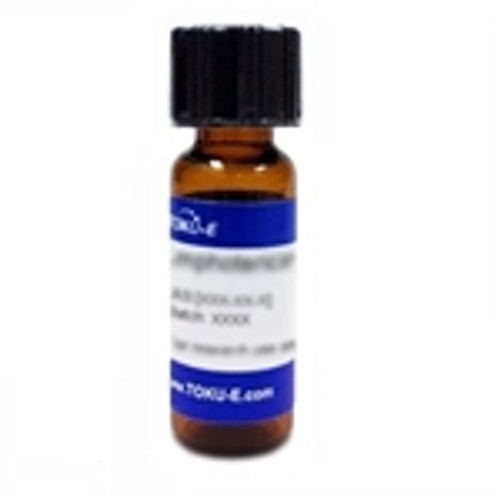(+)-Rugulosin is an intense yellow pigment produced by some species of Penicillium, Aspergillus and the fungal symbiotants of some lichens. As an anthraquinoid mycotoxin, (+)-Rugulosin shows antibacterial and insecticidal activity and has found application as a bioinsecticide, notably as the active secondary metabolite in endophytic fungi of seedlings.
(+)-Rugulosin is soluble in ethanol, methanol, DMF and DMSO.
| Mechanism of Action | Rugulosin inhibits HIV-1 integrase activity in in coupled and strand transfer assays and inhibits ribonuclease H. |
| Plant Biology Applications | Disease-free second instar Choristoneura fumiferana (eastern spruce budworm) were placed on trees infected with a Rugulosin-producing needle endophyte. Budworms feeding on infected trees that contained Rugulosin were smaller than those on uninfected trees. This demonstrates for the first time there is an inverse effect in outdoor nursery experiments between budworm weight and Rugulosin concentration (Miller et al, 2008). |
| References | Breen J et al (1955) Rugulosin, a crystalline colouring matter of Penicillium rugulosum Thom. Biochem. J. 60: 618 Miller JD, Sumarah MW and Adams GW (2008) Effect of a Rugulosin-producing Endophyte in Picea glauca on Choristoneura fumiferana. J. Chem. Ecol. 34:362–368 Watts P et al (2003) Cytotoxicity against insect cells of entomopathogenic fungi of the genera Hypocrella (anamorph Aschersonia): Possible agents for biological control. Mycological Res. 107:581 |



